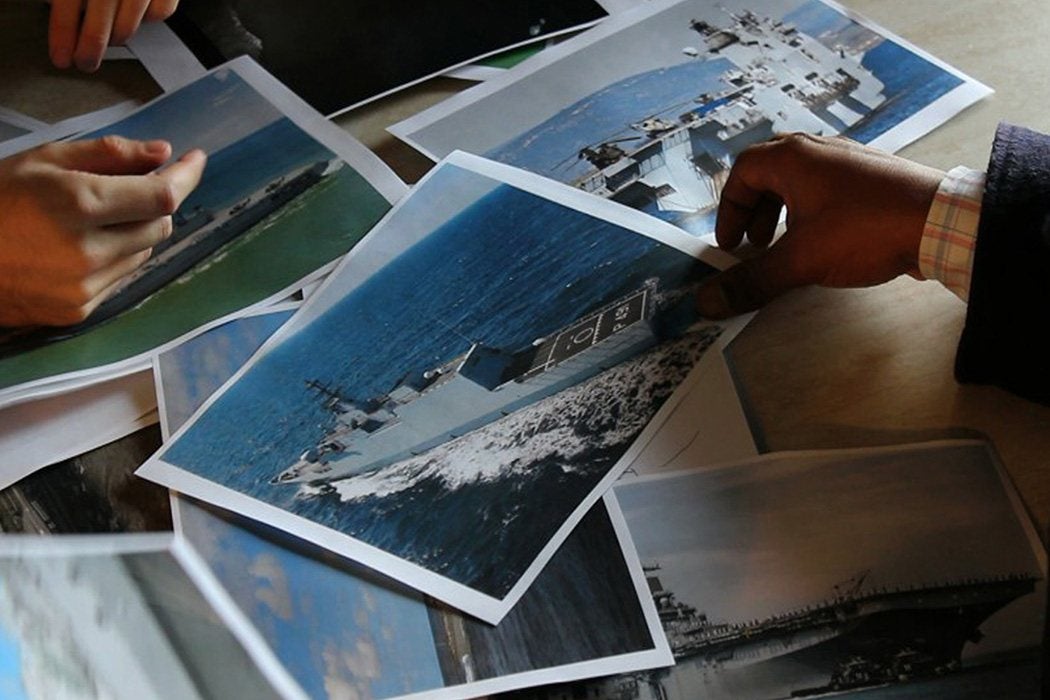The exhibit “It is obvious from the map” opens at the REDCAT in Los Angeles in March and its topic could not be more timely. The exhibit will showcase and compare a variety of maps such as those made and distributed by migrants via mobile technology and pen and paper, along with those produced by computers for governmental agencies in order to assist in tracking migrants.
Tapping into research by Charles Heller and Lorenzo Pezzani, the exhibit will also look at these researchers’ reconstruction maps which chart migrant routes through the Mediterranean using data from complex tracking systems. As REDCAT explains, “These maps reveal how the suffering of migrants is obsessively watched yet murderously neglected by the various forces tasked with their surveillance and control.”
In 2013, Bradley Samuels highlighted a case study undertaken in collaboration with Heller and Pezzani in a special issue of American Society of International Law, called International Law in a Multipolar World. The case looks at the 2011 crisis in Libya that involved 72 people fleeing by boat from from Tripoli. After making it about halfway to Italy, the boat ran out of fuel and spent the next two weeks drifting without water or food. Ultimately only seven people survived. The survivors’ accounts were upsetting, as would be expected, but of particular concern was the many “series of interactions they had with other actors while at sea.” And yet the majority of those on the boat still died, without any aid.
Samuels notes that some of the people they encountered “included military aircraft that flew over them, a distress call they placed via satellite telephone, two encounters with a military helicopter, and an encounter with a military ship.” He continues, explaining that “the survivors’ testimonies clearly pointed to violations of international maritime law which obligates all parties encountering a vessel in distress to render assistance.”
After the survivors’ reports, a spatio-temporal reconstruction of the 15-day journey between Tripoli and its eventual arrival back in Libya, in Zliten where it finally washed ashore. Samuels details that “a comprehensive textual analysis was undertaken in concert with the production of a series of visualizations, diagrams, and figures. This work was an exercise in culling data (geospatial, meteorological, testimonial, military, and other) that was ultimately recombined in an effort to assemble a coherent spatial narrative of the chain of events.” This analysis was truly multi-layered, digitally diverse, and interdisciplinary, as it combined “remote sensing, cinematography, architecture, and oceanography.”
Taking all of this data into consideration, Samuels argues that the inquiry addressed “a humanitarian failure” while also posing a question of liability: “Who was responsible for these 65 deaths?”
Weekly Newsletter
Samuels concludes that “the goal of this work is both to hold accountable those individuals, states, and organizations that failed to assist persons clearly in distress, as well as to draw greater attention to the systemic and longstanding issue of migrant deaths at sea in the Mediterranean.”
In their interactive research projects and investigations, Heller and Pezzani have teamed together to critically explore, investigate, and document the Mediterranean Sea’s militarized border through a number of projects such as their site “Left-to-Die Boat,” their video animation “Liquid Traces,” and their mapping platform “Watch the Med.” The duo uses digital technology, geo-spatial mapping, vessel tracking data, and human testimonials and interviews to visualize human rights violations. Through their investigations, they humanize migrants and emphasize migrant rights as human rights.







